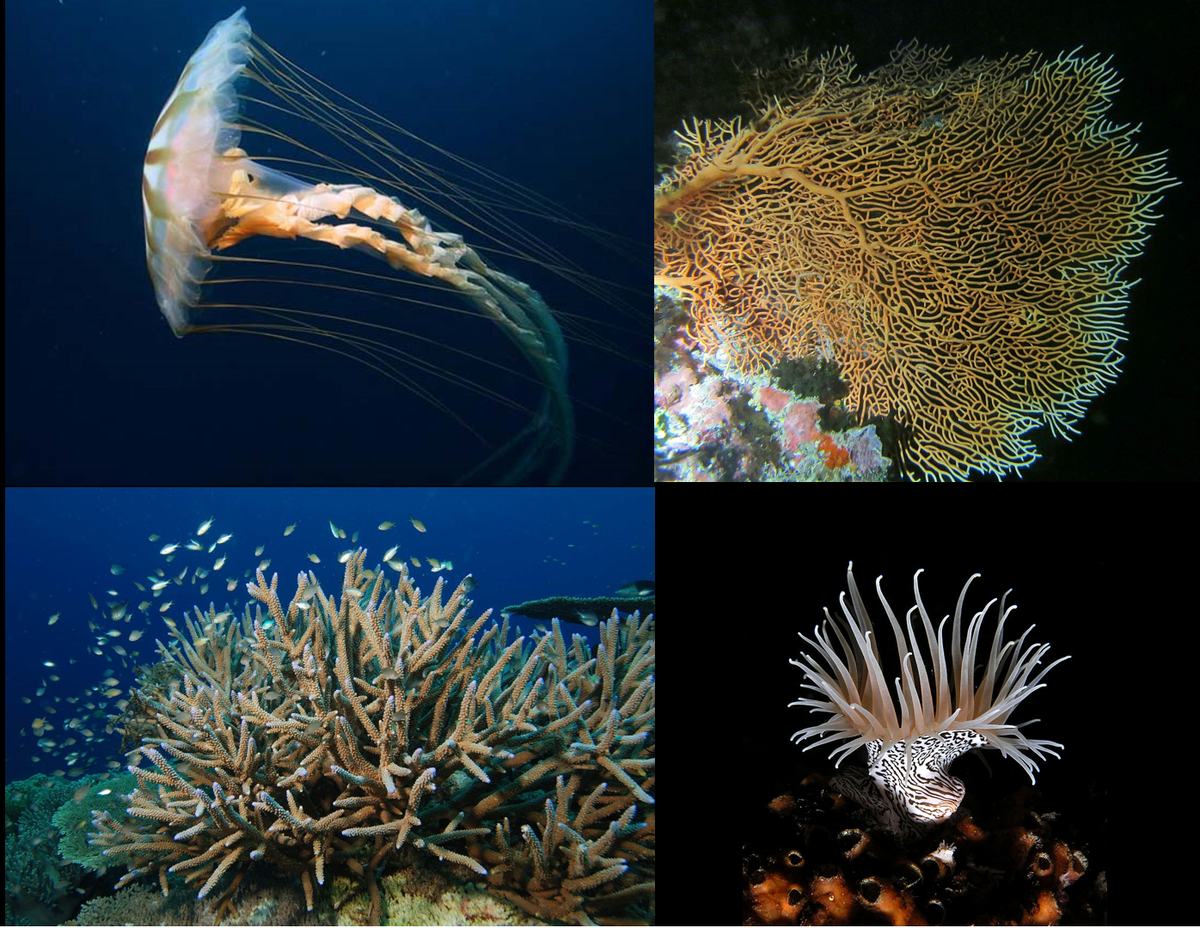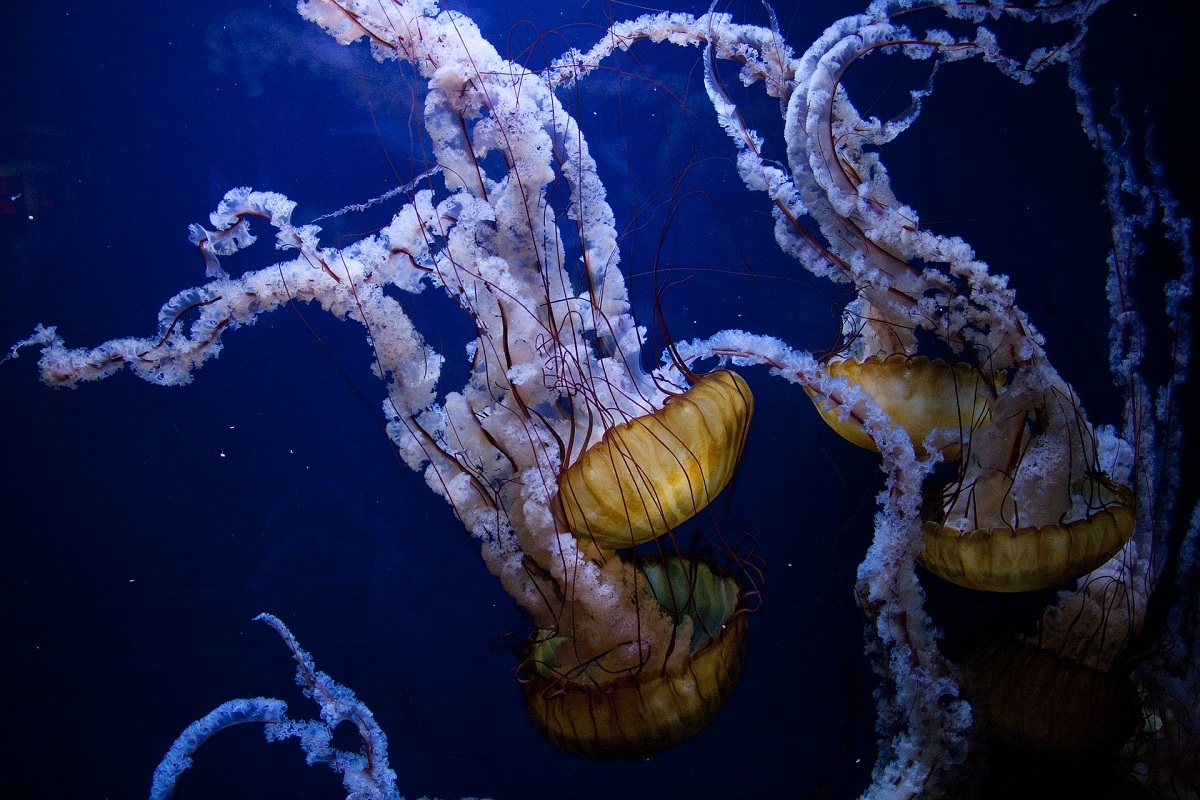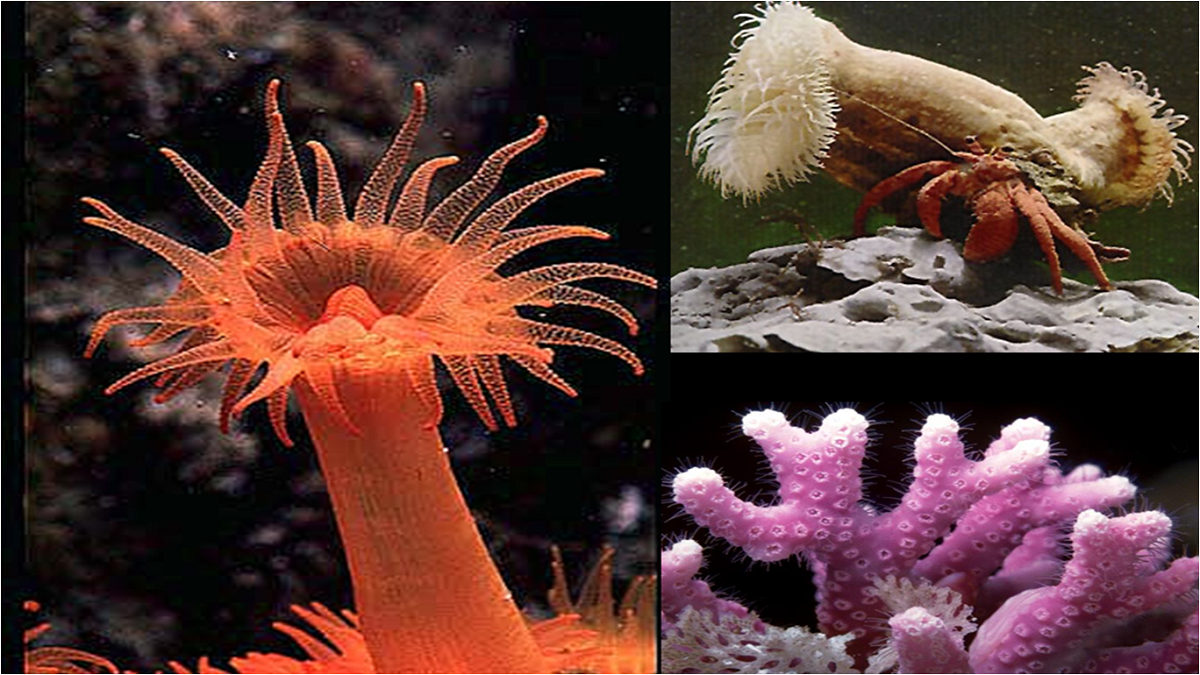
One of the aquatic animals that is characterized by presenting different morphological forms depending on the vital stage in which it is found are the cnidarians. These are animals that are capable of modifying their forms depending on the phases of their life. Here it is included in the group of jellyfish as well as corals that are of great importance for the stability of biodiversity and the oceans.
In this article we are going to tell you about all the characteristics, life cycle and types of cnidarians.
Main characteristics of cnidarians

Cnidarians are aquatic organisms, most of them marine that make up the phylum Cnidaria. Within this edge there are more than 10.000 species. They are quite ancient animals since they have been able to find some fossils from the Ordovician period. Jellyfish are pretty primitive life forms, but that have been able to develop and adapt to various environmental conditions to survive today.
Let's see what are the main characteristics of cnidarians. They are diblastic organisms. This means that the body is made up of two embryonic layers of cells. On the one hand, we have the ectoderm and on the other the endoderm. They are also known by the names of epidermis and gastrodermis. A gelatinous substance is found inside and is known as mesoglea. The mesoglea is especially visible in jellyfish, since they are transparent.
Most of these organisms have radial symmetry which makes its parts are arranged around a central point. They are carnivorous organisms that feed mainly on crustaceans, although there are also some omnivorous species. The gastrovascular cavity of the cnidarians is connected to the outside by a mouth that is surrounded by tentacles. These tentacles are used to capture their prey or defend themselves against the attack of predators.
Another very common species within this phylum are corals. In this case, they present algae that carry out photosynthesis and provide it with the necessary carbon. Most of these organisms have complex reproductive cycles. That is why they form various morphologies throughout these stages. They include some stages in which they have asexual reproduction and others in which they have sexual reproduction. The latter takes place through spawning in which both males and females release their gametes. They do it on a column of water and combine to generate small larvae.
Description of cnidarians

These organisms have a highly variable life expectancy. Depending on the type of species we are talking about, very different life expectancies can occur. Those that are of the polyp type live only about 10, while other pens that are located on reefs can survive for more than 4.000 years. The characteristic that makes them survive so long is that they can regenerate their bodies.
Cnidarians lack specialized respiratory and excretory organs. However, they have a nervous system that helps them identify everything around them. One of the main characteristics that this edge represents are its stinging cells. They are known by the name of cnidocytes and are used to feed and defend themselves. When the cnidocyte receives a series of chemical or mechanical stimuli, they are processed on its surface and a filament loaded with toxic substances is fired. The filament is not reusable, so you can only use it once.
Its digestive cavity is called cellar. Along this cavity are the stomach, esophagus, and intestines. There are both cnidarians that are mobile and others that are completely sessile. This means that they cannot move and that they are attached to the substrate for life.
Types of cnidarians

Let's see what the main classification of these organisms. There are 4 types of classes of cnidarians: hydrozoa, cubozoa, siphozoa and anthozoa.
Hydrozoa class
Here we find numerous small predators. It usually lives mainly in fresh waters and marine environments. They generate calcite shells to protect themselves and live isolated or in colonies. They have non-cellular mesoglea and do not have tentacles in the gastric cavity. They also do not have an esophagus, most of their life they have a polyp type, although some species have the jellyfish phase.
Class Cubozoa
They are the so-called cube jellyfish. They have a primitive nervous system and small eyes. Its morphology is characteristic for being cube-shaped, hence its name. Their bites can be fatal to humans and can lead to death. Since they have a relatively long life, they can reproduce in a sexual or sexual way.
Class Scyphozoa
It is the class that includes what is known as true jellyfish. They are all the specimens that live in the ocean. They have a short phase in which they are polyps and are attached to the substrate, while the rest of their lives are reported as jellyfish. It is larger in size than the hydrozoan jellyfish. Some specimens can measure up to 2 meters in length. However, the most normal thing is that they have lengths between 2 and 40 eleven centimeters.
Among its main features we have a cellular mesoglea as well as tentacles in graphic quality. The time each phase lasts is quite variable. There are some with a longer life, while others are practically non-existent.
Class Anthozoa
This includes anemones, corals, and sea feathers. It is the largest class of this entire line of animals. It has more than 6.000 known species and also many fossil specimens. They are found in all seas and even great depths. They only present to form polyp and can live both solitary and forming colonies. They are shaped like a spinal column and have an aboral end where they can be attached to the substrate and another oral end where they place their mouth that is surrounded by tentacles. These animals appear in complete or incomplete septa or mesenteries that help increase the absorption surface to be able to digest more food.
I hope that with this information you can learn more about cnidarians and their characteristics.